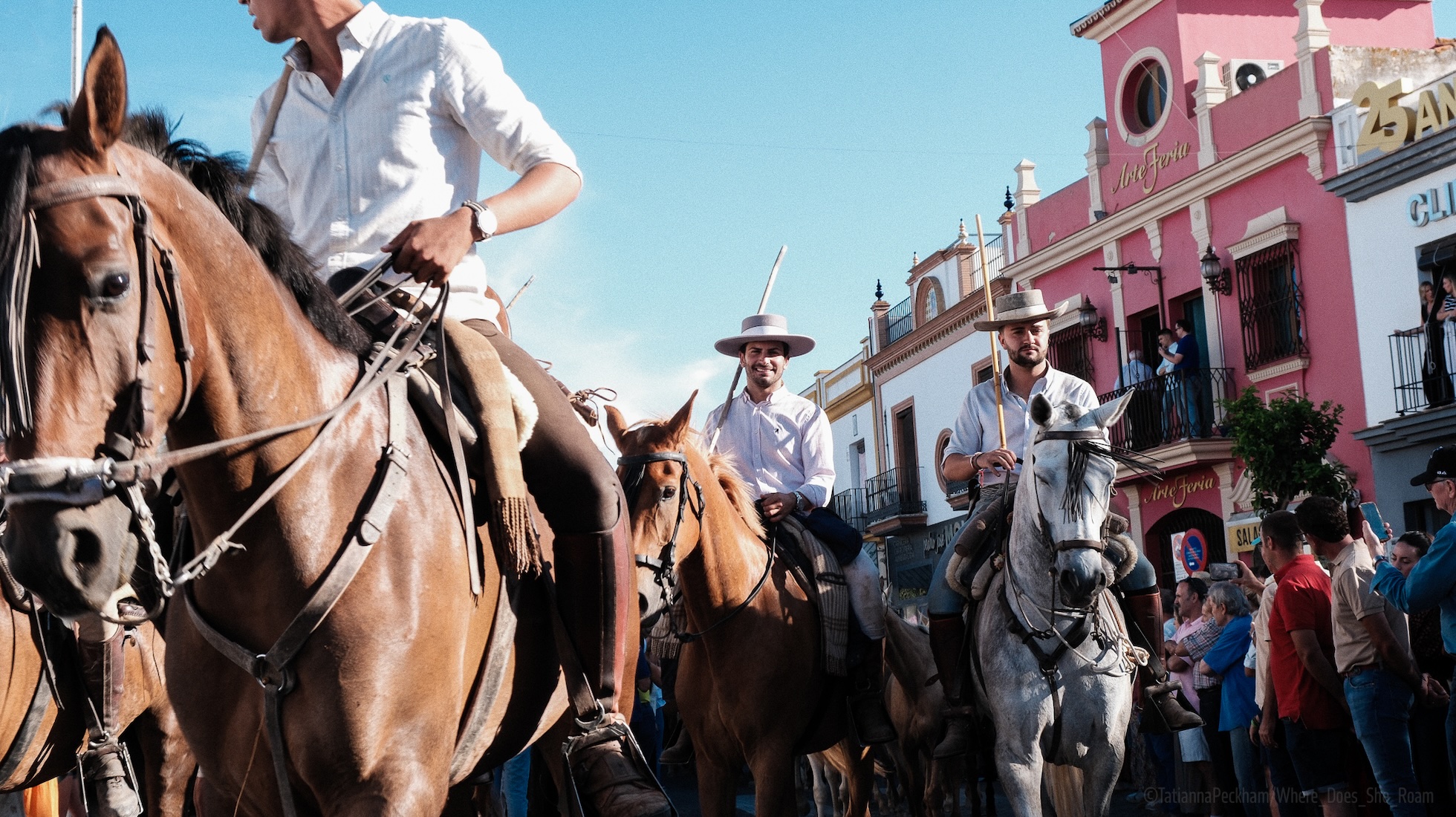Dawn is blushing above Andalusia’s Doñana National Park. In the soft light, a mist that hangs above the quiet marshes begins to part, revealing a rolling tide of riders and horses traversing the sandy tracks that crisscross the wetlands. The age-old ritual of La Saca de las Yeguas has begun.
We follow the procession to the nearby hamlet of El Rocío, where lanes, usually quiet, swell with the sound of hoofbeats. A scent of wet grass, carried by the horses, catches the air, accompanying the swirling dust stirred by the free-roaming Marismeño mares. For more than five centuries, herdsmen known as yegüerizos have gathered these semi-wild mares from the marshes that fringe Andalusia’s Atlantic coast and guided them across dew-kissed plains and sand-choked fields, through El Rocío and towards the town of Almonte and its fairgrounds. This living tradition – weaving together faith, family and ecological stewardship – has become an iconic symbol of Andalusian heritage.
We follow the procession to the nearby hamlet of El Rocío, where lanes, usually quiet, swell with the sound of hoofbeats. A scent of wet grass, carried by the horses, catches the air, accompanying the swirling dust stirred by the free-roaming Marismeño mares. For more than five centuries, herdsmen known as yegüerizos have gathered these semi-wild mares from the marshes that fringe Andalusia’s Atlantic coast and guided them across dew-kissed plains and sand-choked fields, through El Rocío and towards the town of Almonte and its fairgrounds. This living tradition – weaving together faith, family and ecological stewardship – has become an iconic symbol of Andalusian heritage.
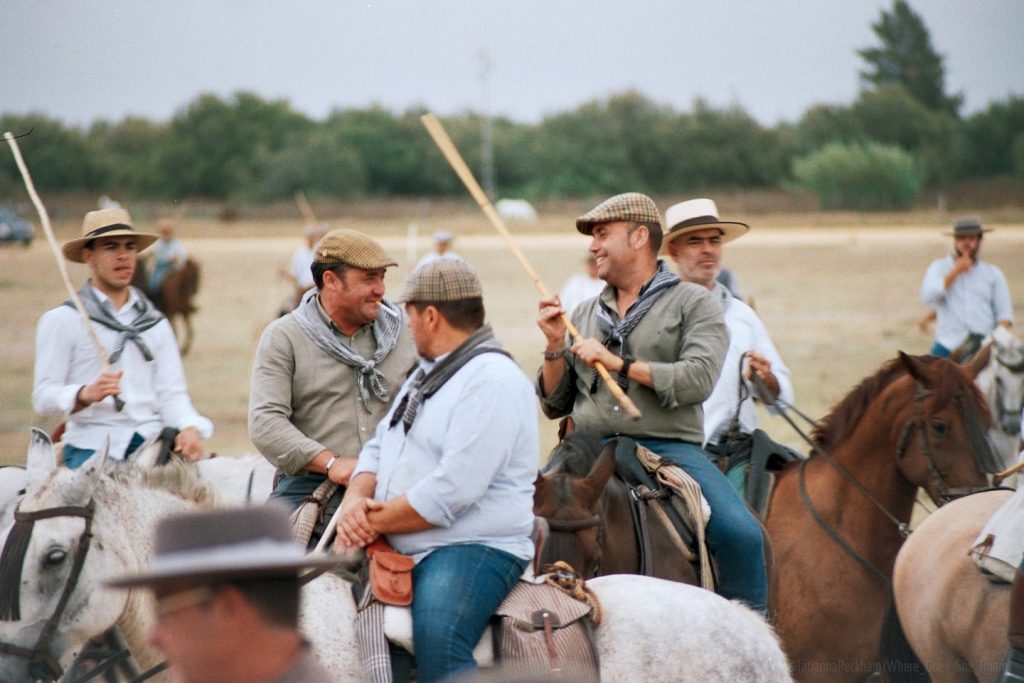
Yegüerizos gather on the marshes | Credit: Tatianna Peckham
Legends whisper that locals were mustering this hardy horse breed long before the written word recorded their existence, but in 1504, Juan Alonso Pérez de Guzmán, 3rd Duke of Medina Sidonia, codified the practice. His ordinance required that every feast of San Pedro, on 26 June, the mares and their foals that live in the heart of Doñana’s marshes were to be driven into Almonte for inspection and sale. What began as a pragmatic operation – supplying fresh draft animals and organising a livestock fair – soon evolved into a proud cultural landmark.
Two days before the feast, at a twilight hour when only nightjars call, we had watched Almonte’s honoured herdsmen ride out into the marshes in small groups. Broad hats shielded the yegüerizos’ faces; in their hands, they carried slender chivata poles.
Legends whisper that locals were mustering this hardy horse breed long before the written word recorded their existence, but in 1504, Juan Alonso Pérez de Guzmán, 3rd Duke of Medina Sidonia, codified the practice. His ordinance required that every feast of San Pedro, on 26 June, the mares and their foals that live in the heart of Doñana’s marshes were to be driven into Almonte for inspection and sale. What began as a pragmatic operation – supplying fresh draft animals and organising a livestock fair – soon evolved into a proud cultural landmark.
Two days before the feast, at a twilight hour when only nightjars call, we had watched Almonte’s honoured herdsmen ride out into the marshes in small groups. Broad hats shielded the yegüerizos’ faces; in their hands, they carried slender chivata poles.

Entering El Rocío on horseback | Credit: Tatianna Peckham
The chivata (also called the vara) is the yegüerizo’s long, tapered herding pole. Typically 2-3m in length, made of ash, willow or wild olive wood, light enough to wield from the saddle, yet rigid enough to steer a surging herd, it’s used in the Saca de las Yeguas to close gaps between the wild horses, nudge a stray foal back to its dam, and “draw” a living gate with fellow herdsmen.
Its origin is purely practical: centuries ago, marsh horsemen needed a tool that wouldn’t injure animals, could prod through reeds and double as a walking staff. Over time, it became symbolic, handed down like a baton, scarred with burns and nicks that mark past round-ups. Today, the chivata is both instrument and heirloom – an extension of the rider’s arm and a tangible link to 500 years of marshcraft and communal memory.
The chivata (also called the vara) is the yegüerizo’s long, tapered herding pole. Typically 2-3m in length, made of ash, willow or wild olive wood, light enough to wield from the saddle, yet rigid enough to steer a surging herd, it’s used in the Saca de las Yeguas to close gaps between the wild horses, nudge a stray foal back to its dam, and “draw” a living gate with fellow herdsmen.
Its origin is purely practical: centuries ago, marsh horsemen needed a tool that wouldn’t injure animals, could prod through reeds and double as a walking staff. Over time, it became symbolic, handed down like a baton, scarred with burns and nicks that mark past round-ups. Today, the chivata is both instrument and heirloom – an extension of the rider’s arm and a tangible link to 500 years of marshcraft and communal memory.
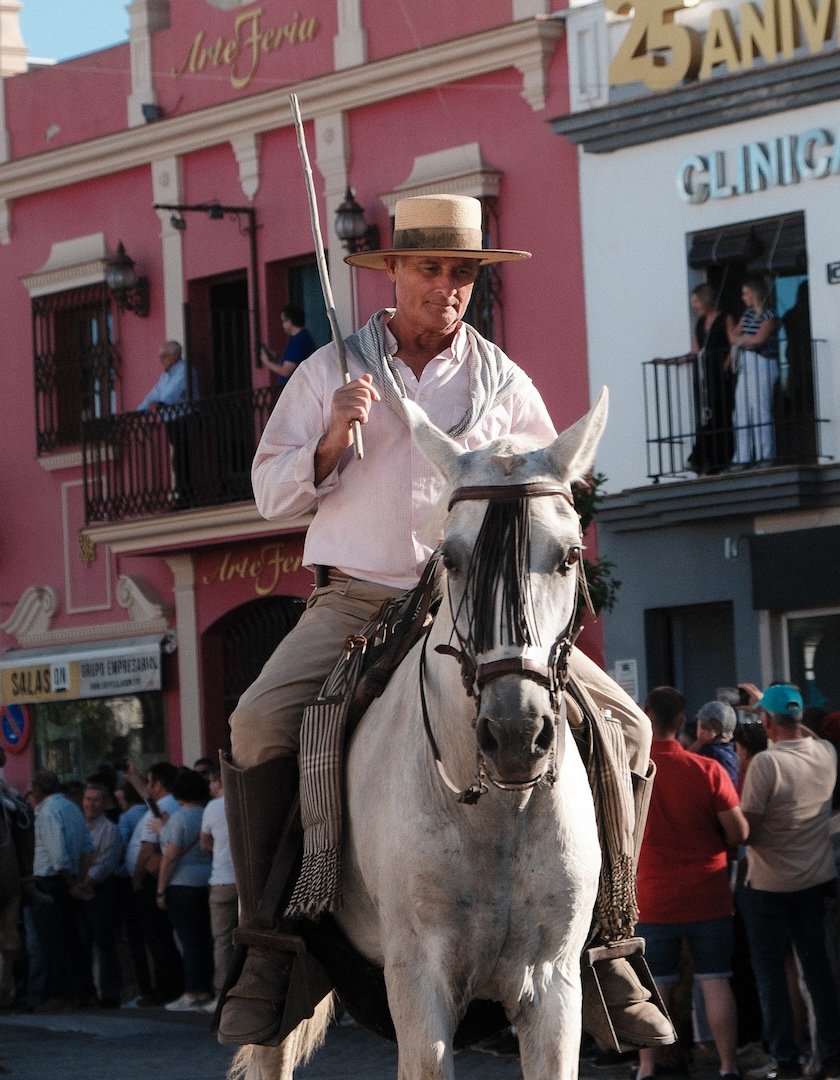
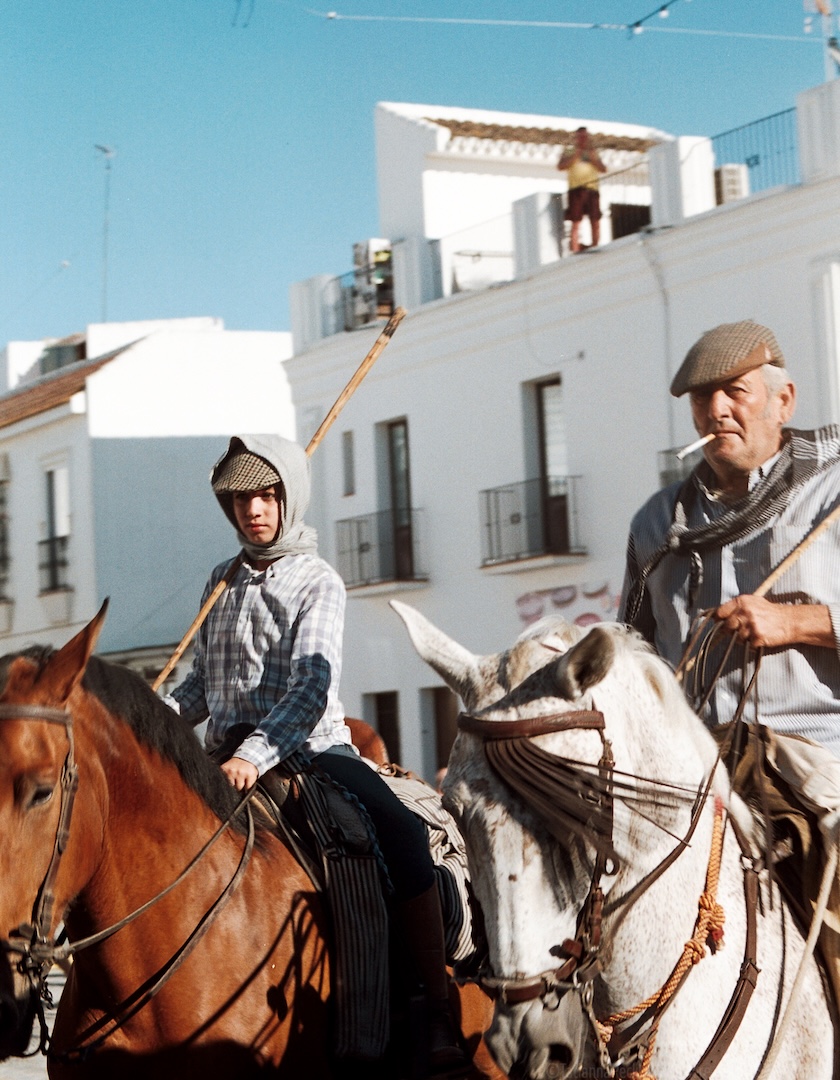
Yegüerizos arriving in town | Credit: Tatianna Peckham
Riding over levees and through shallow waterways, the yegüerizos gathered the mares that freely graze ancient common lands. Later, campfires glowed under cork oaks as riders shared stories of past events and awaited first light, when the formal procession would begin.
Now, as the first pale light arrives, painting the sand silver, we watch 10 disciplined tropas (herds of mares), each led by its yegüerizo, converge on the “Boca del Lobo” – the traditional entry to El Rocío. Before the whitewashed exterior of the Hermitage of El Rocío – a sprawling, terracotta-roofed building – they pause for a priest to bestow a blessing on both riders and beasts. It is a moment of hushed reverence, the only sounds the hooves shifting in the dust and the distant cry of a marsh wader.
Riding over levees and through shallow waterways, the yegüerizos gathered the mares that freely graze ancient common lands. Later, campfires glowed under cork oaks as riders shared stories of past events and awaited first light, when the formal procession would begin.
Now, as the first pale light arrives, painting the sand silver, we watch 10 disciplined tropas (herds of mares), each led by its yegüerizo, converge on the “Boca del Lobo” – the traditional entry to El Rocío. Before the whitewashed exterior of the Hermitage of El Rocío – a sprawling, terracotta-roofed building – they pause for a priest to bestow a blessing on both riders and beasts. It is a moment of hushed reverence, the only sounds the hooves shifting in the dust and the distant cry of a marsh wader.
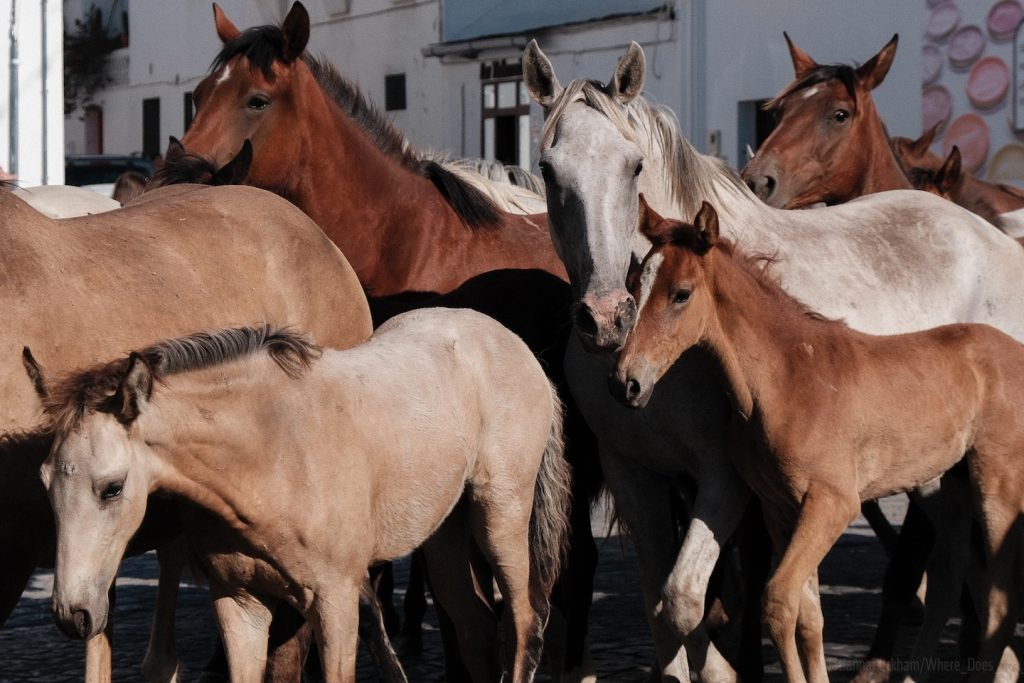
The Marismeño wind through dusty rural lanes | Credit: Tatianna Peckham
Then, onwards. The animals’ fetlocks brush fragrant needles of towering pines lining the winding sandy track towards Almonte. In the hot Andalusian sun, we pause midway at Santa María stream, mares drinking from clear pools and riders offering sugar cubes to curious foals.
By late afternoon, the first groups are entering Almonte, church bells ringing out across the wide Plaza Doñana in the town’s centre to announce their arrival. The herds file along Calle Sanlúcar and El Real, hooves clicking on cobblestones. Balconies draped in green-and-white flaglets overflow with cheering families; children dart beneath horses’ bellies; and women in flowing flamenco skirts offer fresh water and tapas. Every 15 minutes, another troop arrives, until all 10 have passed, each greeted like returning heroes. They now make their way to the Huerta de la Cañada fairground, where they will spend the next three days.
Then, onwards. The animals’ fetlocks brush fragrant needles of towering pines lining the winding sandy track towards Almonte. In the hot Andalusian sun, we pause midway at Santa María stream, mares drinking from clear pools and riders offering sugar cubes to curious foals.
By late afternoon, the first groups are entering Almonte, church bells ringing out across the wide Plaza Doñana in the town’s centre to announce their arrival. The herds file along Calle Sanlúcar and El Real, hooves clicking on cobblestones. Balconies draped in green-and-white flaglets overflow with cheering families; children dart beneath horses’ bellies; and women in flowing flamenco skirts offer fresh water and tapas. Every 15 minutes, another troop arrives, until all 10 have passed, each greeted like returning heroes. They now make their way to the Huerta de la Cañada fairground, where they will spend the next three days.

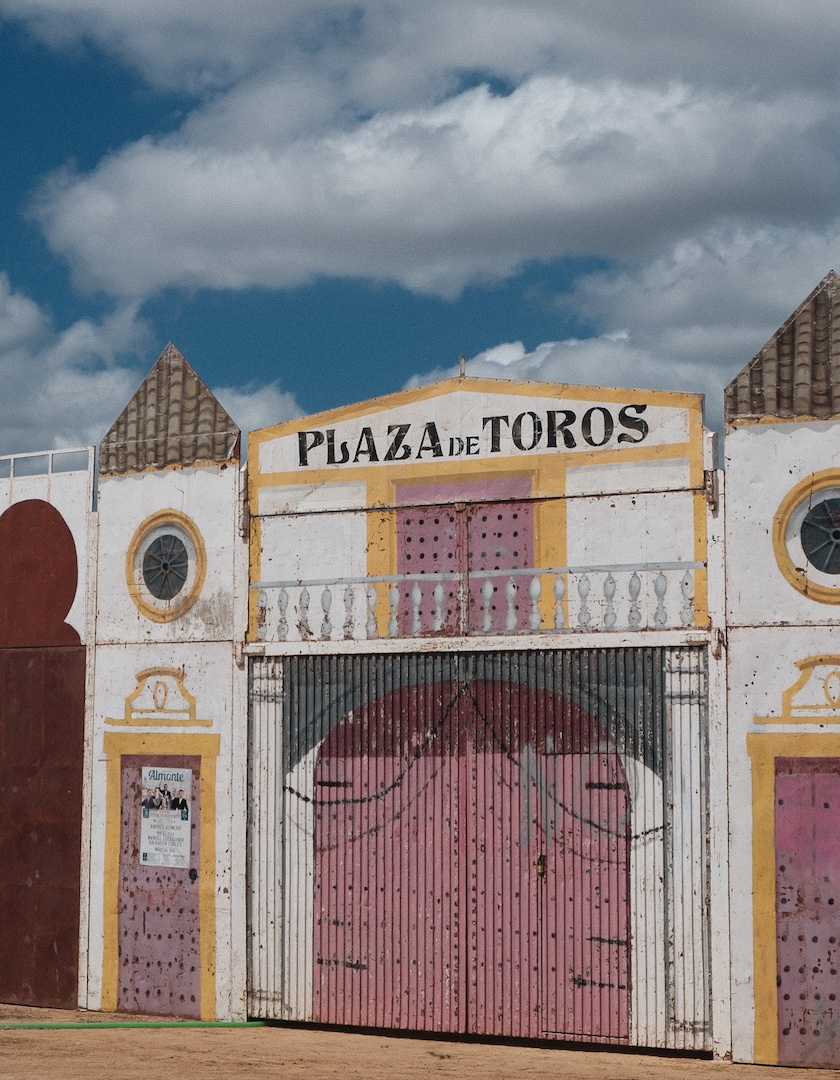
Yegüerizos at the Huerta de la Cañada fairground, left, and a gate to the town’s historic bullring | Credit: Tatianna Peckham (left), Pierre Maillard
Now they’ve arrived, the celebrations can start. We find the fairground humming with activity. Vets and breeders inspect each animal. Manes and tails are trimmed in the traditional tuza ceremony. Foals experience herrado (the shoeing of the young horses), and microchips are implanted to secure pedigrees. Auctions fill the afternoon air with the murmur of offers and the clink of glasses. Though the sale of fillies and foals drives the local economy, supporting stud farms, tack makers and hospitality venues, the fair also serves a higher purpose: preserving the Marismeño bloodline, which was recognised in 2012 as being “in danger of extinction”, and ensuring these resilient horses continue to thrive in Doñana’s shifting wetlands.
Beyond its equestrian splendour, La Saca acts as an annual ecological intervention. Left
unchecked, marsh grazing would choke reedbeds and heighten wildfire risk in one of Europe’s richest biodiversity hotspots. It’s a plentiful landscape that has grown as it is because of human (and herd) intervention, rather than in spite of it. Each June, the guiding of hundreds of mares through reed-clogged channels naturally clears vegetation, maintaining open water habitats for countless bird species, from purple herons to the endangered Spanish imperial eagle. In riding the mares, each yegüerizo also becomes a steward of Doñana’s fragile ecosystem.
Now they’ve arrived, the celebrations can start. We find the fairground humming with activity. Vets and breeders inspect each animal. Manes and tails are trimmed in the traditional tuza ceremony. Foals experience herrado (the shoeing of the young horses), and microchips are implanted to secure pedigrees. Auctions fill the afternoon air with the murmur of offers and the clink of glasses. Though the sale of fillies and foals drives the local economy, supporting stud farms, tack makers and hospitality venues, the fair also serves a higher purpose: preserving the Marismeño bloodline, which was recognised in 2012 as being “in danger of extinction”, and ensuring these resilient horses continue to thrive in Doñana’s shifting wetlands.
Beyond its equestrian splendour, La Saca acts as an annual ecological intervention. Left
unchecked, marsh grazing would choke reedbeds and heighten wildfire risk in one of Europe’s richest biodiversity hotspots. It’s a plentiful landscape that has grown as it is because of human (and herd) intervention, rather than in spite of it. Each June, the guiding of hundreds of mares through reed-clogged channels naturally clears vegetation, maintaining open water habitats for countless bird species, from purple herons to the endangered Spanish imperial eagle. In riding the mares, each yegüerizo also becomes a steward of Doñana’s fragile ecosystem.
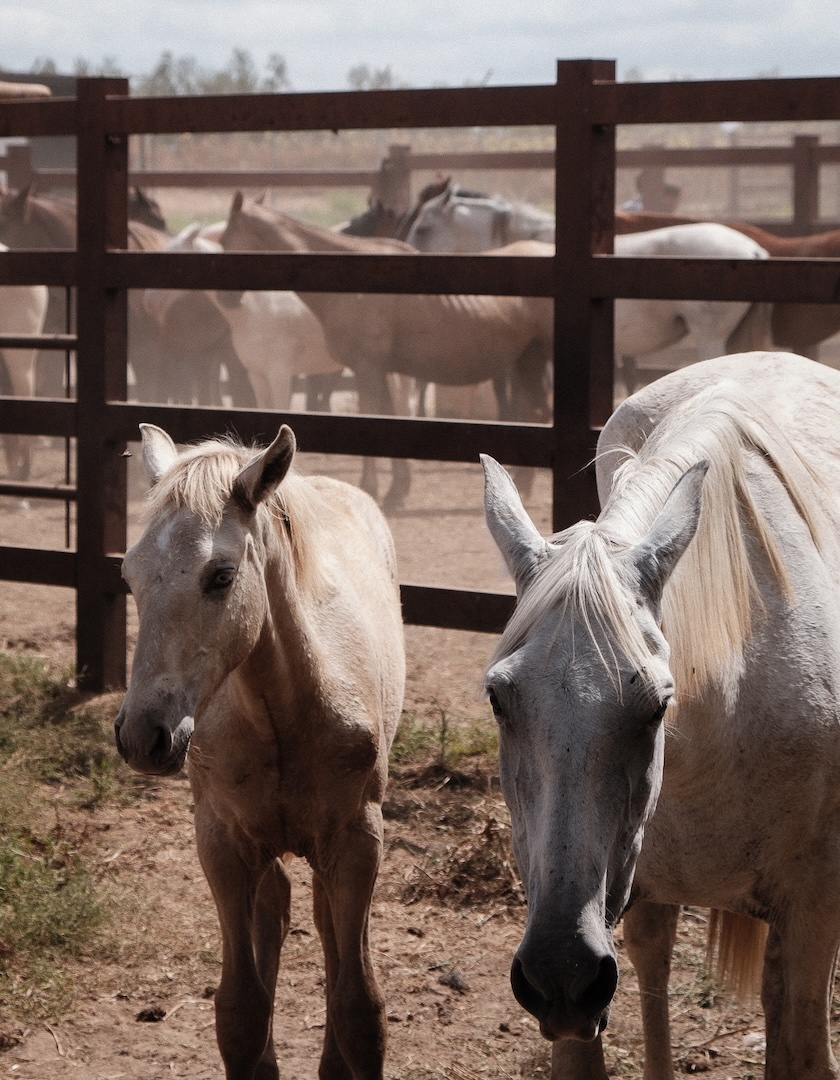
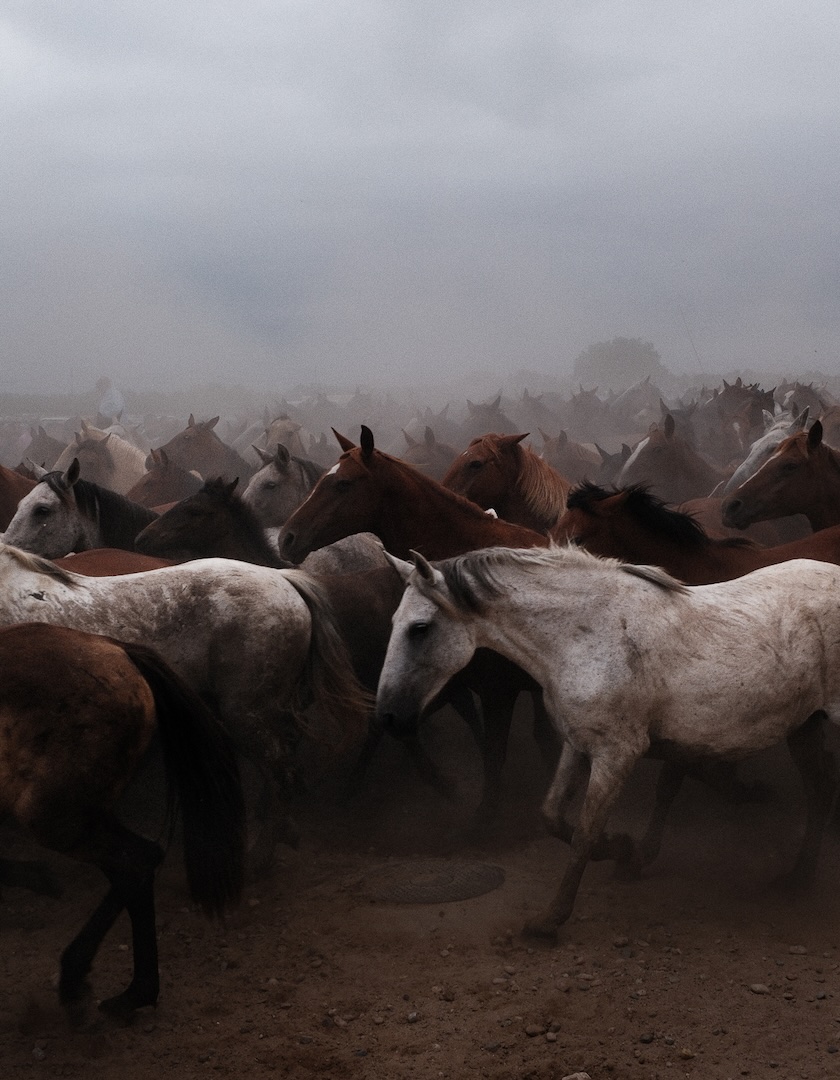
Ghostly crowds of Marismeño, left, and fairground activities | Credit: Pierre Maillard
Watching the crowds at the fairgrounds, it’s clear that La Saca is more than a spectacle; it is a living classroom, where knowledge is passed from person to person, lore and skill shared within a tight-knit community. Around evening fires, elders recount techniques for reading a mare’s gait, spotting early signs of illness, or coaxing a skeptical foal from its mother. Flamenco verses float on the night air, and the chivata pole, worn smooth by generations, passes ceremonially from grandfather to grandson.
Though once a local affair, the Saca now has an international audience. We meet photographers, eco-tourists and researchers from around the world. But even amid global fascination, it retains an unshakeable intimacy – every hoofprint a footnote in a story still being written.
Watching the crowds at the fairgrounds, it’s clear that La Saca is more than a spectacle; it is a living classroom, where knowledge is passed from person to person, lore and skill shared within a tight-knit community. Around evening fires, elders recount techniques for reading a mare’s gait, spotting early signs of illness, or coaxing a skeptical foal from its mother. Flamenco verses float on the night air, and the chivata pole, worn smooth by generations, passes ceremonially from grandfather to grandson.
Though once a local affair, the Saca now has an international audience. We meet photographers, eco-tourists and researchers from around the world. But even amid global fascination, it retains an unshakeable intimacy – every hoofprint a footnote in a story still being written.
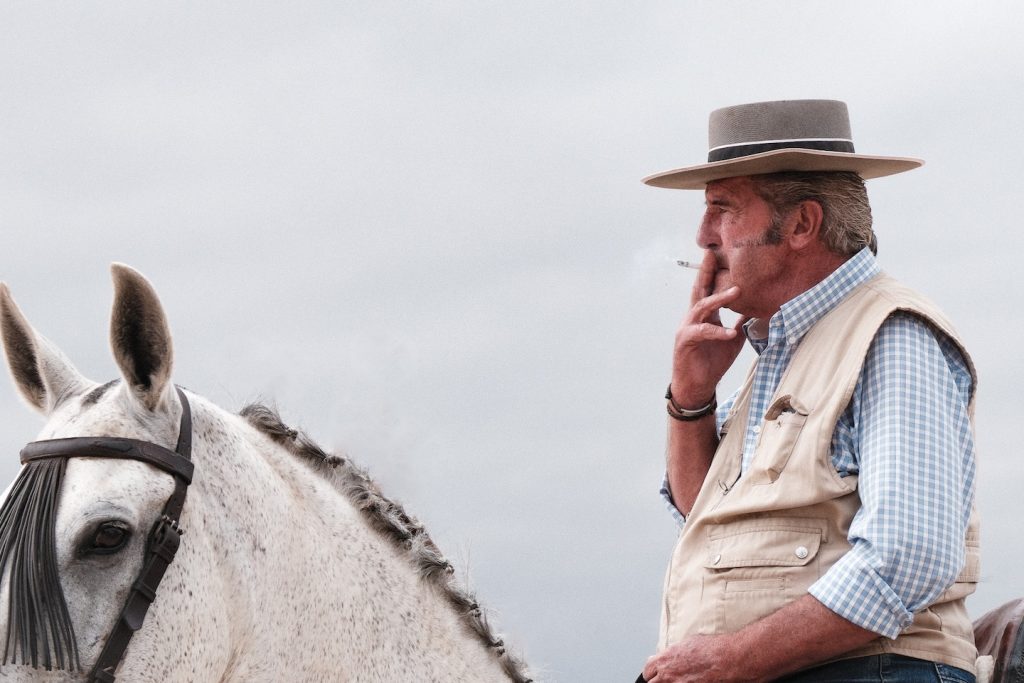
A yegüerizo | Credit: Tatianna Peckham
When, after the festivities, we spot the unbought mares drifting back into Doñana’s marshes, the dust settles but the impact remains. Tracks in the sand mark not only the path taken by horses, but the unbroken link between people and place; past and future. La Saca de las Yeguas is a living continuum, each hoofprint renewing a half-millennium-long dialogue between marsh, mare and human in Andalusia’s shifting sands.
Main photo credit: Tatianna Peckham
When, after the festivities, we spot the unbought mares drifting back into Doñana’s marshes, the dust settles but the impact remains. Tracks in the sand mark not only the path taken by horses, but the unbroken link between people and place; past and future. La Saca de las Yeguas is a living continuum, each hoofprint renewing a half-millennium-long dialogue between marsh, mare and human in Andalusia’s shifting sands.
Main photo credit: Tatianna Peckham




